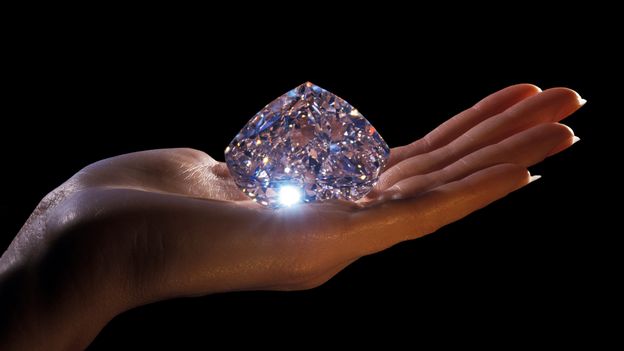Smith – principal investigator at the GIA – was examining the diamond for inclusions, chemical hitchhikers from inside our planet that can reveal how the crystal formed and under what conditions. But working with high-value diamonds is tricky business – ordinarily, it’s impossible for researchers to get their hands on the largest specimens. They sometimes travel around the world to visit potential customers – alas, never scientists.
Maya Kopylova, a professor of mineral exploration at the University of British Columbia, says getting diamond samples is difficult and most of the diamonds she works with would otherwise have been thrown away. “Researchers need to have good relationships with companies and they will never give you valuable samples,” she says. “So they will never give us diamonds of 6 mm (0.2 inches) or more.”
Even then, their acquisition is complicated and expensive – first, Kopylova must visit the high-security facilities where the diamonds are sorted and identify the specimens she would like to study. Once the acquisition has been approved, then comes the paperwork – all diamonds must be accompanied by a Kimberley Process certificate, which proves their provenance and helps prevent conflict or “blood” diamonds from entering the market.
However, Smith’s situation is different. At the GIA, he has access to one of the largest diamond collections on the planet – millions of gemstones that have been sent there to be appraised, so they can be insured or sold. “If you want to see something rare and unusual, this is the place to go because there are diamonds coming through here all the time,” Smith says. “Every few days you can borrow a diamond for maybe a few hours, maybe a day or two and study it.”
A few years earlier, that’s exactly what Smith had done. With an international team of scientists, he casually commandeered 53 of the largest, clearest and most expensive available – including some from the same mine as the Cullinan Diamond – and brought them back to his lab to view them under a microscope. .
What Smith found was revolutionary. Almost three-quarters of the Clippir diamonds contained tiny pockets or “inclusions” of metal that had prevented rusting – not something you’d find in regular diamonds – while the other 15 contained some kind of garnet that only forms in Earth’s mantle, the layer above its molten core.
Together, these inclusions provide chemical clues that the diamonds could have formed no less than 360 km (224 miles) and no more than 750 km (466 miles) below feet. In this Goldilocks area it’s deep enough to account for metal inclusions that hadn’t been exposed to oxygen, which is abundant higher up, and it’s not so deep that the garnet rocks would have collapsed under the immense pressures of the lower mantle. Ordinary diamonds, on the other hand, come from below the earth’s crust, only 150-200 km (93-124 miles) deep.
For his 2020 study – in collaboration with Wuyi Wang, who is vice president of research and development at the GIA – Smith analyzed the 124-carat diamond and found that it had formed at the upper end. possible range deep – at least 660 km (410 miles) below Earth’s surface.

